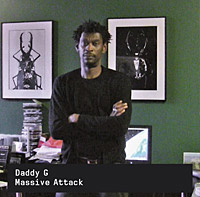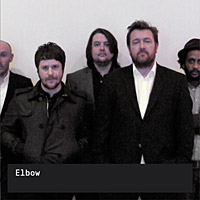For you, the phrase “head-banging music” might evoke hazy student nights in the college bar. For Binyam Mohamed, the British resident recently returned from Guantánamo to the U.K., it brings back darker memories. Of his treatment in the CIA-run “Dark Prison” in Afghanistan Binyam recalls:

“It was pitch black no lights on in all the rooms for most of the time…They hung me up. I was allowed a few hours of sleep on the second day, then hung up again, this time for two days. My legs had swollen. My writes and hands had gone numb… There was loud music, [Eminem’s] “Slim Shady” and Dr. Dre for 20 days… [Then] they changed the sounds to horrible ghost laughter and Halloween sounds. [At one point, I was] chained to the rails for a fortnight … The CIA worked on people, including me, day and night… Plenty lost their minds. I could hear people knocking their heads against the walls and the doors, screaming their heads off.”

During his time in the U.S. “secret prison system” Binyam experienced a varied menu of torture techniques which grimly illustrate what happens when the “gloves come off” and legal safeguards are thrown out of the window. During his almost seven-years in U.S. prisons, his suffering included beatings, being slashed with razors, having loaded guns put to his chest and being hung up for a week at a time. But it was “torture music” that Binyam found hardest to bear.
“Imagine you are given a choice,” Binyam asked Reprieve’s Director, Clive Stafford Smith, ‘Lose your sight or your mind. Which would you choose?’ For Binyam, and for most people, it is losing our mind and our very sense of self which we fear the most. Plenty of people lost their minds in the Dark Prison, but that is by no means the only place where U.S. forces, including the CIA and U.S. military personnel, have employed torture music. Thailand, Poland, Afghanistan, Uzbekistan, Morocco, Iraq: the list is endless.

Torture music is not “torture-lite,” despite being designed to “leave no marks.” The method has a history and a science. The CIA realized, through psychological experiments in the 1950s and 60s that you could break down a person’s identity and trigger psychosis through sensory deprivation and overload. Recognizing its seriousness, the United Nations (U.N.) and European Court of Human Rights (ECHR) have already outlawed the use of music in this fashion. The U.N. called it torture and the ECHR, cruel and inhuman treatment. However U.S. forces have continued to use this method.

In partnership with the U.K. musicians’ union, Reprieve set up zero dB, to put an end to the use of music to torture. Through zero dB, musicians are speaking out against torture music and calling on President Obama to expressly outlaw it. The list of musicians objecting to the practice — some of whose own music has been used to torture — and calling for the humane treatment of prisoners grows daily. This list includes Tom Morello of Rage Against the Machine, Trent Reznor of Nine Inch Nails, Massive Attack, Elbow, Ash, Dizzee Rascal.
The use of music in torture should be openly condemned and prevented. And those who authorized the torture program — including the use of music as torture — should be investigated and held accountable for their role in the abuse of prisoners. There is a real danger that “psychological” techniques like torture music will be increasingly attractive as more obvious practices like “waterboarding” are ruled out.
We cannot afford for torture music to slip under the radar. To find out more or join the protest by adding your name to our petition, go to: www.zerodb.org
Chloe Davies researches renditions and secret prisons and works on the rehabilitation of prisoners at UK legal action charity Reprieve. Reprieve uses the law to enforce the human rights of prisoners, and represents 30 men currently held in Guantánamo Bay as well as prisoners on death row worldwide.

